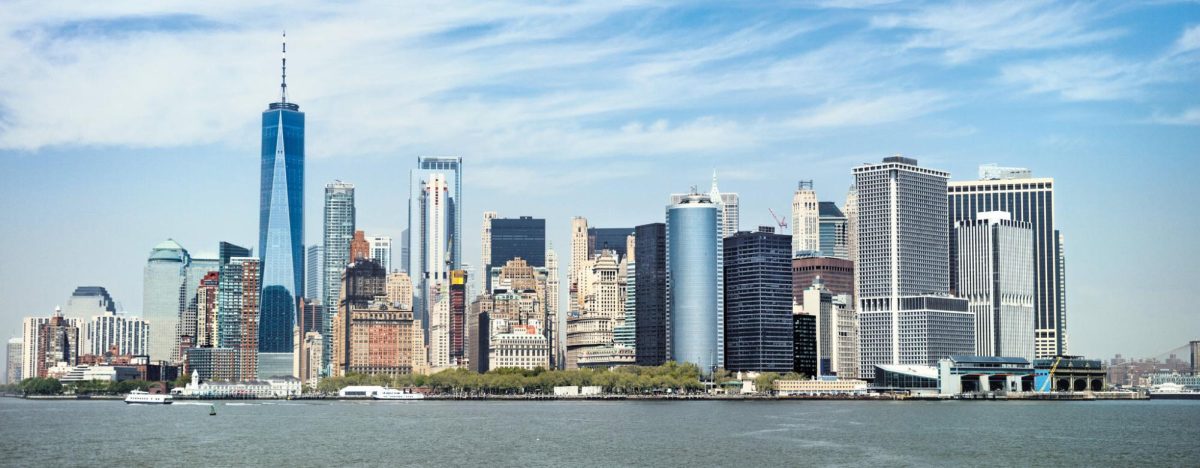According to The New York Times, New York City has experienced an immense surge of over 170,000 migrants since April 2022. This comes as no surprise, as the city’s sanctuary policies provide unparalleled benefits to migrants. To be specific, definitive shelter is provided for 30 days to all residents regardless of legal status. However, as refuge locations are becoming perpetually crowded and packed, this housing policy is currently being observed as unattainable.
With this influx of immigration, New York City Mayor Eric Adams is deemed to have figured out a solution to this prolonged irresolute question of population mitigation. In October 2023, Adams launched a funding initiative in order to provide migrants with one-way plane tickets out of the city in hopes of relieving such congestion. Although tens of thousands of migrants have evacuated the five boroughs, according to Newsweek, many aspiring New Yorkers still remain, hence making Mayor Adams’s hopeful mass relocation relatively unsuccessful.
Consequently, another proposed resolution has been offered, with the anticipation that it will not only relieve city funding and overpopulation, but also reduce crime. On Feb. 27, Mayor Adams claimed to reporters that migrants who are either suspected or convicted of any crime should be deported, according to ABC News. This modifies New York City’s sanctuary policies by enabling cooperation between city law enforcement and federal immigration authorities. If everything goes as planned, the major complications catalyzed by the recent immigration surge will be predominantly resolved.
In a recent poll conducted by Quinnipiac University on Dec. 6, 2023, 85 percent of New York City voters expressed concern that the recent stream of migrants will be difficult for the city to accommodate in the near future, and 66 percent go as far as to completely condemn migrants being offered complementary temporary shelter. This disapproval, although very firm, can be reasonably justified, as a large portion of taxpayer assets are funding the fabrication of impermanent housing and are hence not being used for city repairs and upgrades that taxpayers hoped for. In addition, numerous refuge facilities are being installed on land across the city in order to resolve crowded sanctuary buildings, thus blocking New York residents from utilizing such amenities. All in all, local anger associated with city spending on migrants appears appropriate when considering the perceived unfairness surrounding such controversy.
It bears mentioning that New York City has been a metropolis reliant on immigration throughout its history. In recent years, apprehension towards overpopulation has been recurrently present, with fear of the city’s total downfall. However, New York City has always rebounded from its lowest moments and matured through each setback. When Ellis Island was open from 1892 to 1954, about 12 million immigrants passed through their doors with the same intention as present day: searching for freedoms and opportunities. Mirroring today’s problems, a lack of refuge housing proved to be an issue, so tenement buildings were constructed in the lower east side of the city. Housing about 2.3 million migrants by 1900, these buildings, although not remarkably comfortable, treated the city’s overcrowding. With that being said, as sanctuary policies were not yet enacted by New York City’s legislation, migrants did have to pay a rental fee — although discounted — which covered a large portion of the tenements’ funding. Regardless, this historical period is now deemed beneficial for the city’s economic growth and development in the 20th century, further proving the recurrent advantages of mass immigration to its workforce.
When interpreting the present-day migrant influx in New York City, many questions arise regarding the challenges and pressures aligned with such congestion. Adams’s efforts appear to have mixed success. Nonetheless, New York City will always be a melting pot of cultures, made up of millions of diverse backgrounds from across the globe, and that can never be changed. However, overpopulation will remain a concern of the city’s residents, and solutions by Mayor Adams and those in governing positions will continuously be proposed to crack down on this problem. Consequently, the following months will expose whether sanctuary policy adjustments are at all turning the page to necessary change.















